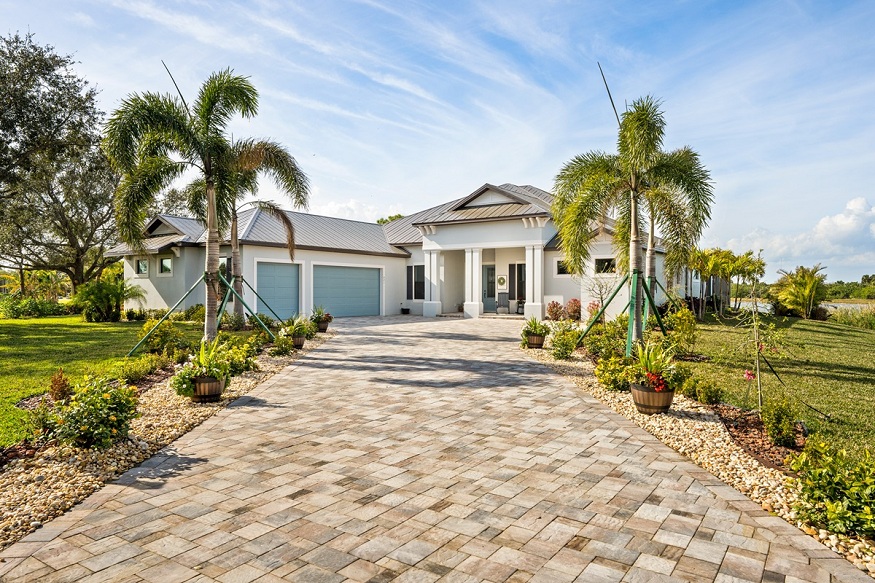The design of outdoor spaces often leads to material selection for walkways, driveways, patios, and garden paths. Versatile and durable, they also add to the aesthetic of these kinds of projects and hence have become popular choices: pavements. From renovating an outdoor space to starting with a fresh canvas, the selection of the right pavers becomes the component that finally extends this transformed area back to your home. The purpose of this article is to help you work through the major considerations in selecting pavers for the next landscaping or hardscaping project, therefore enabling you to make informed decisions that have the potential to stand the test of time.
Understanding Paver Materials
Paver materials can offer multiple benefits and appearances. Concrete pavers offer fantastic durability with a thousand shapes, dimensions, and colours. Natural stone pavers, whether granite, limestone, or slate, create unique patterns and textures, giving an appearance cloaked in history. Clay brick pavers give more warmth and character with many rich colours and a traditional feel. Porcelain pavers have emerged as a very plausible choice, enjoyed for low maintenance and resistance to staining, while rubber and plastic varieties stand as environmentally friendly alternatives that are made from recycled materials.
Climate Considerations
The local climate is essential for selection, as it decides which pavers will perform best in your outdoor areas. Freeze-thaw cycles can lead to rupture and heaving of some materials, so in cold-climate regions, pavers should be of high density and comparatively low in water absorption rate. While light-coloured pavers would do really well in the hot climate, thus giving the solitude of their outdoor spaces from the summer heat. High-rain conditions demand pavers good at draining water and preventing water pooling and subsequent erosion over time. Always select materials that have known performance history in climates similar to your own.
Traffic and Weight Requirements
Intended use greatly governs your choice of materials. Driveway Paver must resist crack and remain stable under heavy vehicular weight and constant traffic over time. So these must be thick interlocking pavers laid on a properly prepared base and good drainage. High traffic areas should consider pavers at least 2.5 inches thick, with compressive strength ratings allowing for vehicle weight. For walkways and patios—pedestrian applications—thinner pavers are acceptable, but they must still be installed properly to avoid trip hazards and allow for longevity under regular foot traffic.
Style and Aesthetic Appeal
Your choice of pavers should complement the architectural style of your house and the design of your entire landscape. Traditional houses often exhibit lovely pairings with brick or cobblestone-style pavers that enhance their classical appeal. Support for contemporary houses arrives in the form of smooth, large-format pavers that boast clean lines and minimal texture.
Pattern and Layout Options
The layout pattern in which you install your pavers can have a significant influence on the finished look of your project. Running bond patterns establish a traditional, formal appearance perfect for formal rooms. Herringbone patterns introduce visual appeal and offer superior interlocking strength for driveways and heavy-traffic areas. Circular and fan designs make focal points in Garden Stepping Stones areas or entranceways. Basketweave patterns provide a classic look that can be used for most architectural styles. Your paver size and shape will restrict which patterns can be achieved, so plan layout possibilities early in your decision-making process.
Colour Choice and Fading
Choose paver colours with a long-term appearance in mind. Dark pavers get hotter but will conceal stains more than light ones. Lighter colours will reflect heat but could display dirt and oil more easily. Look at how the colours will harmonize with your house and garden landscaping during varying seasons. A number of makers produce blended colours containing multiple harmonious tones to achieve a natural, variegated look. Research how various paver materials and colours resist UV light in your area since some will be more prone to fading after decades of sunlight exposure than others.
Maintenance Requirements
Various paver materials have different maintenance requirements throughout their lifespan. Some need periodic sealing to guard against stains and prolong their lifespan, while others require little attention other than an occasional cleaning. Concrete pavers usually must be resealed every 3-5 years to keep them looking good and holding up well. Natural stone can be special-cleaning dependent and sealant-dependent on the type. Take your maintenance willingness into consideration when choosing materials. Polymeric sand or joint sand between pavers also impacts maintenance requirements, with polymeric varieties inhibiting weed growth but potentially being more high-maintenance to install.
Drainage Considerations
There needs to be good drainage on any paved area in order to avoid water damage, erosion, and the possibility of foundation problems. Permeable pavers will permit water to pass through to the ground level below, keeping runoff low and groundwater recharge higher. These earth-friendly choices can function well for sites with stormwater management issues. Conventional non-permeable pavers must be accurately graded and planned so that they channel water away from buildings. Spacing between pavers and the substrate materials installed affect drainage performance significantly. Always keep in mind how water will flow through and across your paved areas during intense rainfall. Budget Factors
Paver projects have different costs based on materials, installation difficulty, and preparation requirements of the site. Concrete pavers provide the most budget-friendly option but with decent durability and design options. Natural stone is a higher cost but gives unparalleled character and lifespan. The cost of installation is usually more than the material cost, so factor in the overall project cost with base preparation, edging, and professional installation if not self-installing.
Conclusion
Choosing the appropriate pavers is a process of weighing functional needs and style options to build outdoor areas that are pleasing to the eye and useful as well. By examining closely the factors of climate appropriateness, traffic conditions, maintenance considerations, and appearance, you’ll make well-informed choices that benefit your property for years to come. Keep in mind that proper installation is equally vital as material selection—even the best materials will not last if they are installed with out improper base preparation or techniques. Be patient and take the time to explore choices, stop by showrooms to view materials in place, and consider discussing the project with landscape professionals to get your paver project done to specifications while achieving your vision and fulfilling functional needs.

